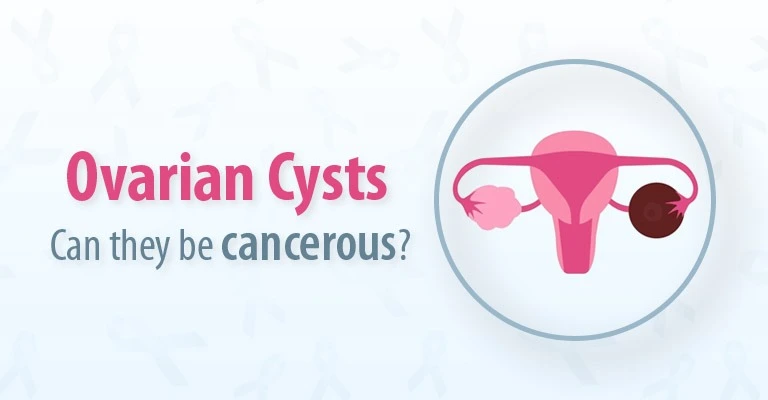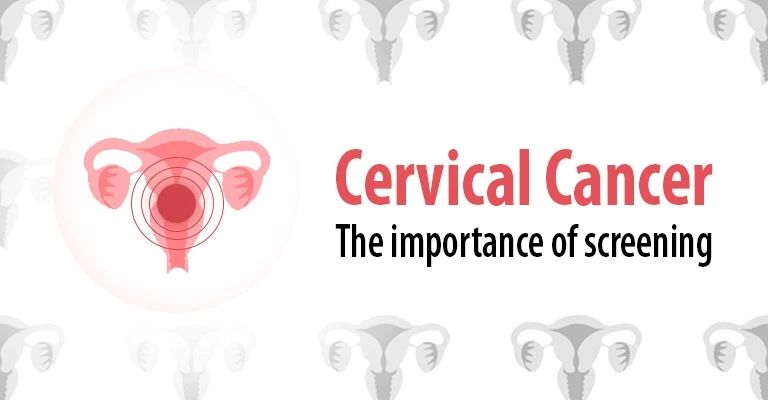
Ovarian cysts are sacs of fluids which could form on and in the ovaries. Most such cysts that occur before menopause are benign and resolve on their own. Post-menopause, a small percentage of new cysts could be cancerous, but that percentage is extremely small.
The incidence of malignancy in post-menopausal patients with unilocular cysts (without a solid component) is a mere 0.3%. Malignant changes have been noticed in a very small percentage of dermoid cysts and endometriomas. Pregnant women who have simple cysts less than 6cm in diameter, have a malignancy risk of below 1%.
What are the known risk factors linked to ovarian cancer?
Certain factors that could raise a woman’s chances of malignancy include:
- Family history of ovarian, gut or breast cancers, particularly in parents or siblings
- Prior history of breast or gut cancer
- Genetic predisposition for cancer of the ovaries
- An irregular-shaped ovarian cyst bigger than 2 inches and partly solid
- Presence of multiple cysts on both the ovaries
- Buildup of fluid on the abdomen or pelvis
Are there any discernible symptoms of ovarian cancer?
While symptoms alone can’t define if an ovarian cyst is benign or malignant, very few women with ovarian cancer will have any symptoms, especially early on. There could be some pretty non-specific abdominal symptoms like:
- Swelling in the abdomen
- Constant bloated feeling
- Appetite loss
- Pain in the abdomen or pelvic region
- Irregular periods
- Pain during sexual intercourse
- Frequent urination
If you are over 50, post-menopausal and having one or more of these symptoms, along with a family history of ovarian cancer, you sure need to see your doctor for further investigation.
How are malignant ovarian cyst diagnosed?
Ovarian cysts are quite often detected during the course of a pelvic examination. If the doctor suspects malignancy, she/he will seek more details on patient and family history, symptoms and other risk factors. Some patients will have to undergo a recto-vaginal exam, while those deemed at higher risk of cancer, might have to go through some minimally invasive diagnostic procedures like:
- Trans-vaginal USG: This ultrasound imaging technique is very helpful in delineating a proper characterization of the cysts.
- CA-125 blood test: This blood test measures a particular protein level – CA-125, and elevated levels could be indicative of ovarian cancer. However, this test is not always conclusive since this protein also spikes during periods or among women with uterine fibroids and even other cancers like endometrial cancer.
- MRI scan: Magnetic resonance imaging helps in mapping the structure of an ovarian cyst by producing highly-detailed images of the soft tissue.
- Diagnostic surgery: Sometimes, for definitive diagnosis, a minimally invasive pelvic laparoscopy or an exploratory laparotomy is done. A tissue sample might also be harvested for further screening.
How are malignant ovarian cyst treated?
Surgery is usually the first stop. Doctors try to extract the maximum mass of the cancer feasible. Sometimes, they are forced to remove reproductive organs as well.
Chemotherapy very often is the next step, post-surgery. Sometimes, doctors use other treatment options like targeted therapy medication and hormonal therapy. If the cancer has metastasized to other parts of the body, radiation therapy is used as well.
What is the outlook for ovarian cancer patients?
The outlook or prognosis largely depends on the stage and type of cancer. For localized cancers, the five-year survival rate is pegged at over 90%. If the cancer has spread far and wide to other parts of the body, the rate comes down drastically to around 30%. However, the outlook depends a lot on the surgery outcome, meaning the more of the cancerous tissue removed or debulked, the better the prognosis.
Medica Cancer Hospital provides comprehensive diagnosis and treatment facilities for managing ovarian cancer under the supervision of experienced doctors.


















